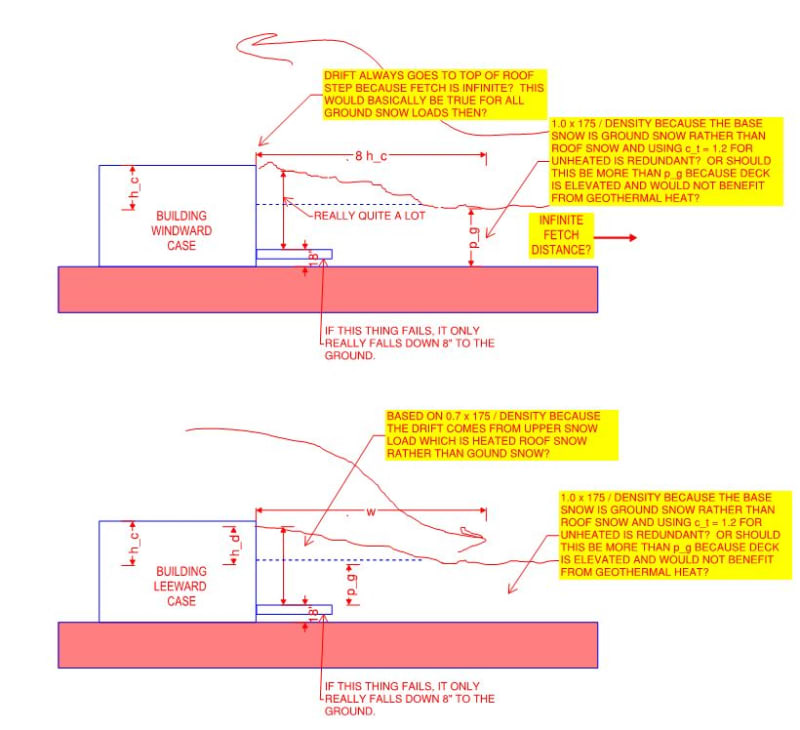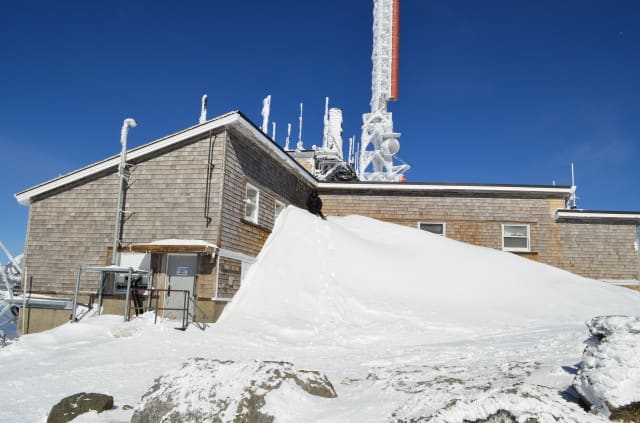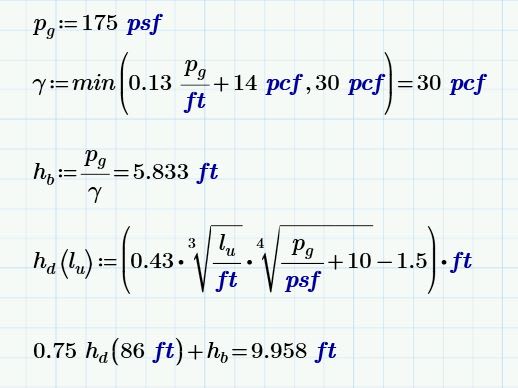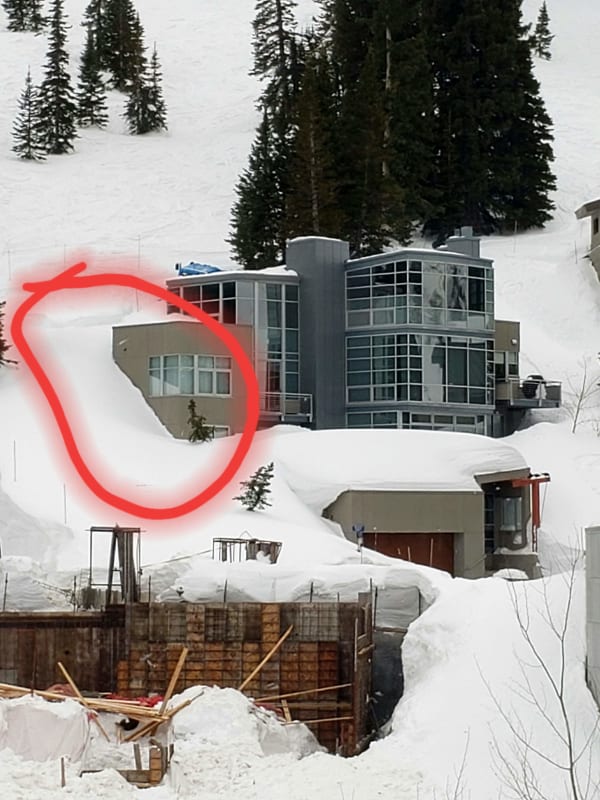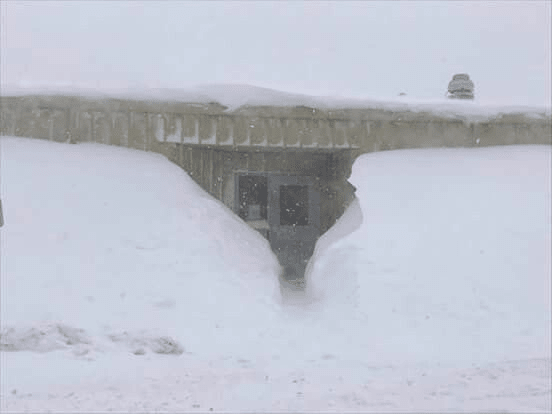Architectural Glass to Resist Seismic and Extreme Climatic Events said:
3.5.1 Ground snow depth
Windows located near grade are susceptible to lateral pressures from the depth of the ground snow. Drifting snow can cause a significant snow depth increase against the side of a building over and above a uniform ground snow depth. O’Rourke6 states that ASCE 7-05 remains silent on the issue of snow lateral pressure. He also indicates that a somewhat conservative but general approximation of the lateral load can be calculated by utilizing Rankine’s theory for cohesionless soil and a frictionless wall. O’Rourke6 provides an example of this calculation.
Rice and Dutton22 indicate that snow load lateral force was considered in the design of the glass facade for the La Cite de Sciences et de La Villette, Paris, France. Their lateral force rationale was not disclosed. A window in deep snow that is subject to a lateral snow force is shown in Fig. 3.17.
